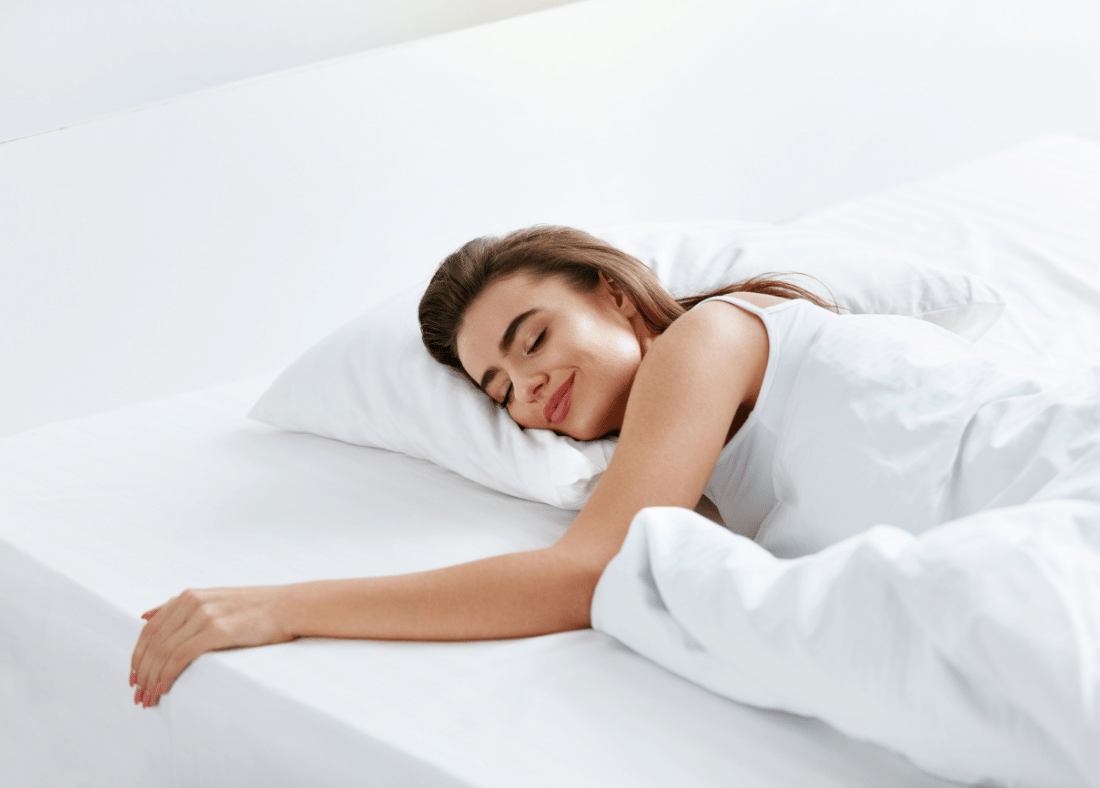What Is The Best Color Light For Sleep?
Andy MantWhen it comes to getting better quality sleep, light plays an important role. Our sleep cycles are governed by our circadian rhythm which is ultimately entrained by external signals from our environment. If you are waking up in the middle of the night this can be very frustrating.
Understanding how light signally to our central clock system works is essential in determining the best color for sleeping.
How Light Impacts Our Sleep
Thousands of years ago humans developed something called a circadian rhythm. You may have heard people talk about your body clock, which is another term for circadian rhythms. This clock system is composed of multiple proteins located inside your brain. It tells the time of day for you by taking clues from the outside world.
These clues come in the form of photons, temperature and food intake.
When it comes to sleep and wake cycles it is photons that dictates these processes. Sunlight, specifically in the visible blue spectral range, sends a signal to our brains that it is daytime and to release the specific hormones and neurotransmitters associated with being diurnal. ipRPG cells, which are photosensitive cells located in our eyes, that are sensitive to blue light.
The absence of the color blue after sunset signals to our body clock that the sun has set and bedtime is approaching. This absence of both blue and green colors after sunset signals to our brains to start producing melatonin which is our sleep hormone.
Our circadian rhythms work best under sunlight/dark cycles as this is what we evolved under. However, this issue today is we know live under artificial lighting both day and night which sends signals to our circadian clocks that is perpetual daytime, which is very bad for sleep.
Therefore, it would be true to say that artificial blue and green light is not the best color lights at night. Neither would be bright lights as these would impair your ability to fall asleep faster and stay asleep.
To determine the best color for sleeping we need to understand something called the melatonin disruption zone.
Best Color Light for Sleep - The Melatonin Disruption Zone
In 2001, the melatonin disruption zone was identified by Brainard et al. to fall between 400nm and 550nm. In layman terms this is 100% of visible blue and the majority of green light. What color light is good for sleep cannot therefore fall between these wavelengths, so that rules out blue and green.
The same study also assesses red photons, which is found from 600nm to 700nm. Red was shown to have no negative impact on the release of sleep hormones. This indicates that the best color of light for sleep is red.
At BON CHARGE we would recommend using red light in your house after sunset, in the hours before bed for optimal sleep. We would also suggest using blue blocking glasses which block blue and green between 400nm and 550nm.
What is the Best Color Light to Sleep With?
This is a very different question to what the best color of light for sleep is. The article so far has analysed the science and shown that red is the best color for sleep, before bed.
In March 2022, a study was released that showed sleeping under moderate light impairs cardiometabolic function. Total darkness is the key to a good nights sleep. In 2010 a study demonstrated that complete darkness and lack of sound was the perfect recipe for the best night's sleep. The participants used ear plugs and black out sleep masks and saw a statistically significant increase in REM sleep and fell asleep faster.
It is not always possible to sleep in complete darkness. You can use a black out sleep mask, black out curtains and turn off your digital devices in your bedroom, but what if you need to get up in the middle of the night to visit the bathroom?
Referring back to the 2001 study by Brainard et al. they concluded that red light does not have any significant impact on melatonin production. We product melatonin even when we sleep so if we get up in the night it is essential not to interfere with the production of this valuable sleep hormone.
If you switch on a regular LED lights that emits blue light in the middle of the night you will disrupt your melatonin production and may have trouble falling back to sleep. If you use red colors for trips to the bathroom in the night you can avoid the pitfalls of melatonin suppression and fall back to sleep faster.
Final Thoughts
To summarise, the best color light prior to sleep, in the evening time is red. A light source devoid of blue and green is the best option and that contain relaxing light colors. BON CHARGE offer red light lamps, bulbs, torches and night lights to help with this.
Whilst you sleep 100% darkness is best but according to the science you can use red light if you need to use the bathroom in the night, or need a nightlight whilst you sleep. This color will not disrupt your melatonin production.
For sleeping in total darkness you can try a 100% black out sleep mask.
Medical advice should always be sought from a qualified doctor if you have going sleep issues.




